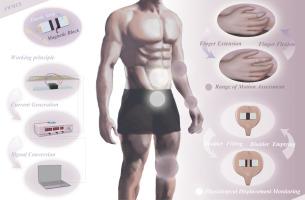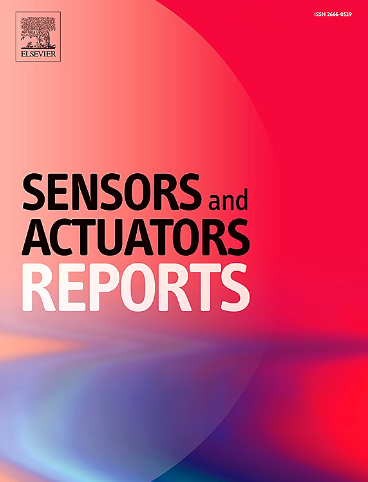Flexible wireless magnetic closure sensor: A biocompatible device for real-time biomedical applications
IF 7.6
Q1 BIOTECHNOLOGY & APPLIED MICROBIOLOGY
引用次数: 0
Abstract
Traditional sensors face significant challenges in applications such as rehabilitation training and intraoperative monitoring. These challenges include limited operational flexibility due to wired connections, insufficient conformity of rigid designs to dynamically deforming regions, difficulty in observing and quantifying organ muscle movements, and poor performance in real-time monitoring of muscle coordination patterns. To address these limitations, this study developed a flexible wireless magnetic closure sensor (FWMCS) based on the principle of electromagnetic induction. Inspired by magnetic clasp in daily life, this sensor combines real-time monitoring, wireless operation, flexible adaptability, cost-effective manufacturing, and biocompatibility, enhancing its adaptability and reliability in complex dynamic environments, including rehabilitation training and intraoperative monitoring. Experimental results demonstrated that the FWMCS performed excellently in scenarios such as joint rehabilitation training and physiological displacement monitoring. It accurately captured dynamic motion signals and enabled efficient functional assessments, showing compatibility with various rehabilitation programs. Its lightweight, modular design and elimination of the need for professional technical requirements make it suitable for home rehabilitation.

柔性无线磁封闭传感器:实时生物医学应用的生物兼容设备
传统传感器在康复训练和术中监测等应用中面临重大挑战。这些挑战包括由于有线连接而限制的操作灵活性,刚性设计与动态变形区域的不一致性,观察和量化器官肌肉运动的困难,以及实时监测肌肉协调模式的性能差。为了解决这些限制,本研究开发了一种基于电磁感应原理的柔性无线磁闭合传感器(FWMCS)。该传感器的灵感来自于日常生活中的磁扣,结合实时监测、无线操作、灵活适应性、高性价比制造和生物相容性,增强了其在复杂动态环境中的适应性和可靠性,包括康复训练和术中监测。实验结果表明,FWMCS在关节康复训练和生理位移监测等场景中表现优异。它准确地捕获动态运动信号,并实现有效的功能评估,显示出与各种康复计划的兼容性。其重量轻,模块化设计,无需专业技术要求,使其适合家庭康复。
本文章由计算机程序翻译,如有差异,请以英文原文为准。
求助全文
约1分钟内获得全文
求助全文
来源期刊

Sensors and Actuators Reports
Multiple-
CiteScore
9.60
自引率
0.00%
发文量
60
审稿时长
49 days
期刊介绍:
Sensors and Actuators Reports is a peer-reviewed open access journal launched out from the Sensors and Actuators journal family. Sensors and Actuators Reports is dedicated to publishing new and original works in the field of all type of sensors and actuators, including bio-, chemical-, physical-, and nano- sensors and actuators, which demonstrates significant progress beyond the current state of the art. The journal regularly publishes original research papers, reviews, and short communications.
For research papers and short communications, the journal aims to publish the new and original work supported by experimental results and as such purely theoretical works are not accepted.
 求助内容:
求助内容: 应助结果提醒方式:
应助结果提醒方式:


